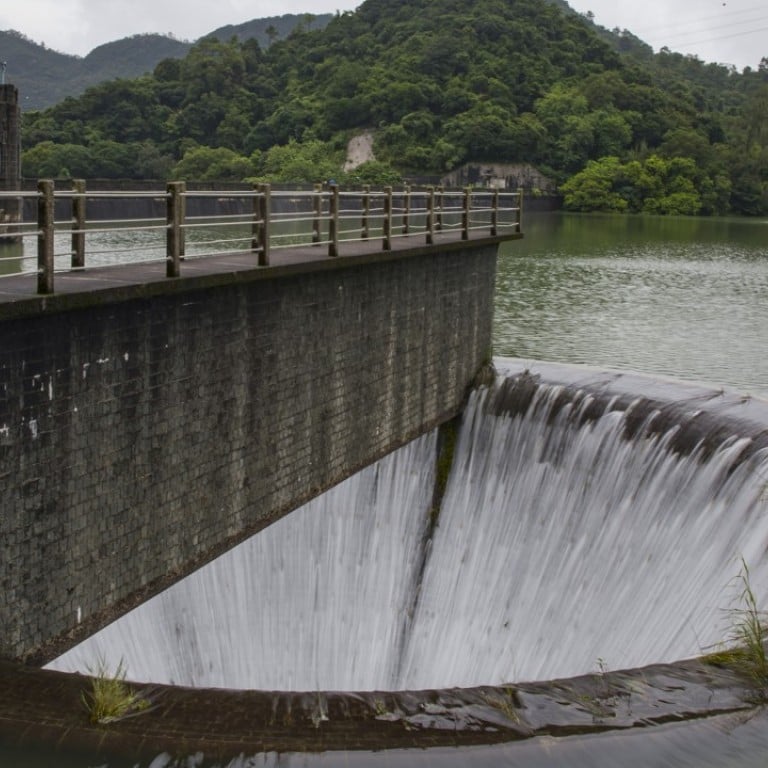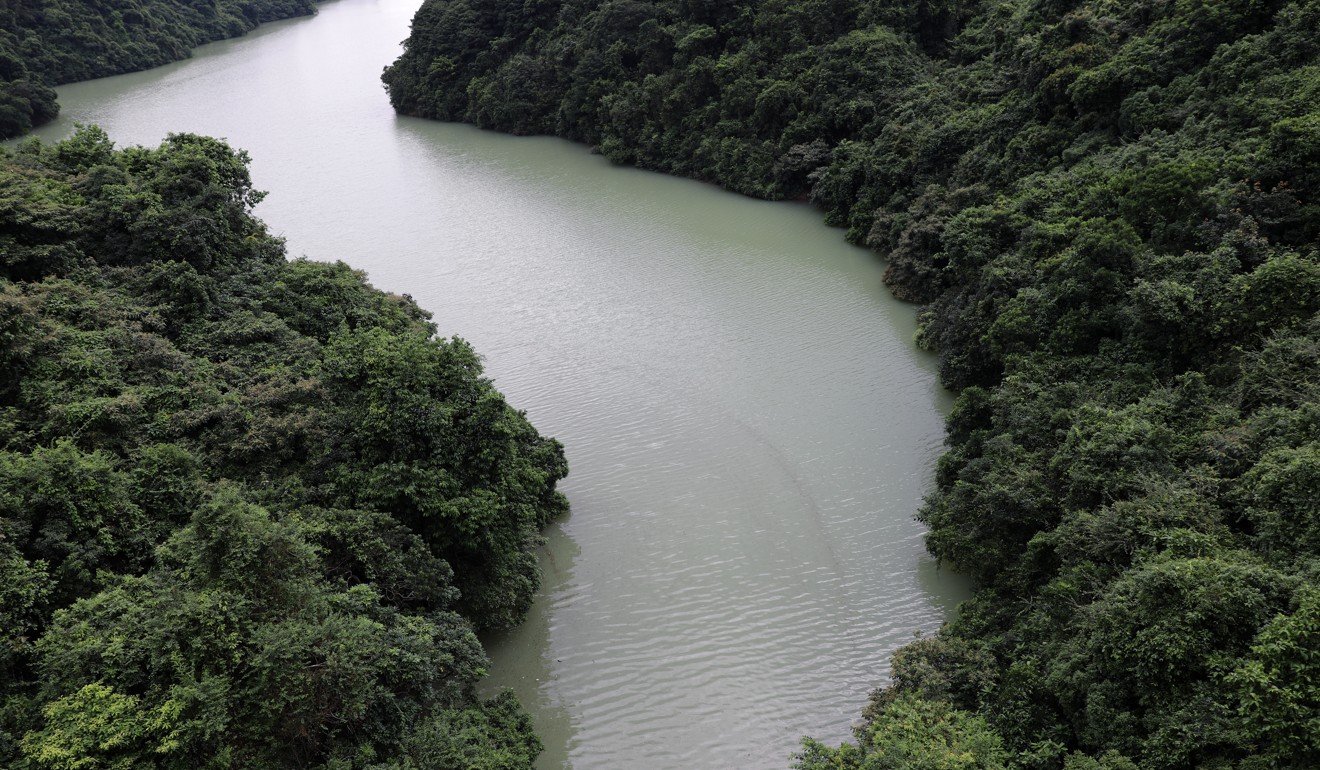
HK$1.2 billion drainage plan to collect reservoir excess will save city 3 million cubic metres of water – enough for 70,000 Hongkongers yearly
But expert questions if HK$19.7 million saved from importing this amount from mainland is worth it, against city’s massive consumption bill
Hong Kong will save more than 3 million cubic metres of water each year when a project to collect excess run-off from four Kowloon reservoirs is completed, drainage officials have said.
According to the Drainage Services Department, the amount could meet the annual demand of 70,000 Hongkongers.
At present, all excess rainwater goes to waste once the reservoirs are full, because it flows downhill into storm drains and out to sea.
In pictures: reservoirs fill with rainwater after drying up in May
The plan centres on transferring water between reservoirs when they fill up during periods of heavy rain.
A 2.8km tunnel will connect Kowloon Byewash Reservoir – which is fed by the Kowloon, Shek Lei Pui and Kowloon Reception catchments – to Lower Shing Mun Reservoir through Kam Shan Country Park.
Works could begin as early as next year, and the design would involve automated water gates releasing excess water into the tunnel once the reservoirs reach capacity.

“The four reservoirs only have a capacity of about 2.8 million cubic metres,” drainage chief Edwin Tong Ka-hung said. “The storage capacity is not really sufficient and they have a tendency to overflow.”
Lower Shing Mun Reservoir can hold 4.3 million cubic metres, and supplies freshwater directly to waterworks in Sha Tin, Hong Kong’s most populous district.

The large reservoir has not overflowed in the past decade, Tong said, and an estimated 3.4 million cubic metres of water from the other four areas can be recovered by channelling flow to Lower Shing Mun.
Diverting and saving the excess run-off would also reduce flooding in built-up neighbourhoods downstream such as in Sham Shui Po, Cheung Sha Wan and Lai Chi Kok, he said.
Some of these areas have drainage systems that are heavily stressed and almost 40 years old.
As Hong Kong’s dry spell continues, are drought fears justified?
The department estimated the project would cost HK$1.2 billion and take more than three years to complete after its launch in 2019. A public tender is up until the end of this month.
Dr Ji Chen, a water security expert at the University of Hong Kong’s civil engineering department said 3 million cubic metres was “not a significant” amount of savings considering the city’s massive annual consumption of 1 billion cubic metres.

Based on the HK$5.8 per cubic metre Hong Kong pays for water from Guangdong’s Dongjiang, or East River, it would work out to savings of about HK$19.7 million (US$2.5 million).
Hong Kong imports 80 per cent of its freshwater from the Dongjiang.

